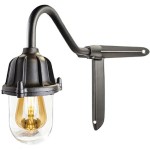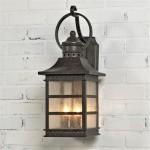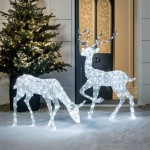Residential Outdoor Lighting Regulations
Navigating the world of outdoor lighting can be a complex endeavor, especially when considering local regulations. This article provides a comprehensive overview of the common regulations surrounding residential outdoor lighting, aiming to equip homeowners with the knowledge necessary to illuminate their property safely and responsibly. While specific rules vary across jurisdictions, understanding the general principles and common themes will help homeowners avoid potential violations and ensure their outdoor lighting projects are compliant.
Light Pollution and Its Impact
Light pollution arises from the excessive or misdirected use of artificial light, impacting the natural environment and human health. It disrupts nocturnal ecosystems, interfering with the behaviors of wildlife, and negatively affects astronomical observations. Excessive lighting also contributes to energy waste, impacting sustainability efforts. Many local regulations aim to mitigate light pollution by controlling the intensity, directionality, and timing of outdoor lighting.
Key Considerations for Residential Outdoor Lighting
Several crucial factors play a role in understanding residential outdoor lighting regulations. Homeowners should be aware of the following:
1. Light Intensity and Brightness
Regulations often limit the maximum brightness of outdoor lights. This is typically expressed in terms of lumens, a measure of the total light output of a fixture. Homeowners should choose fixtures that emit a sufficient amount of light for safety and security purposes while staying within the prescribed limits. Additionally, regulations may restrict the use of high-intensity lights like floodlights, particularly in residential areas. Consider using softer, more focused lighting instead for walkways and landscaping.
2. Light Direction and Shielding
Regulations often emphasize the importance of directing light downwards and shielding it from nearby properties. This prevents light from spilling into neighboring yards or streets, minimizing glare and light pollution. Shields or baffles can be incorporated into fixtures to achieve this. For example, outdoor lights with downward-facing lenses or shields that direct light to the ground are encouraged, while fixtures that emit light upward or sideways are often discouraged.
3. Timing and Automation
Many regulations promote the use of timers or motion sensors to control outdoor lighting, allowing for greater energy efficiency and reducing unwanted light pollution. Timers can be set to automatically switch on lights during specific hours, such as dusk to dawn, while motion sensors activate lights only when movement is detected, helping to conserve energy. Some localities even provide incentives or rebates for homeowners who implement these features. Additionally, regulations may specify the maximum duration for outdoor lighting, especially for certain types of fixtures.
4. Specific Fixture Types
Regulations may impose restrictions on specific types of outdoor lighting fixtures. For example, certain jurisdictions might restrict the use of high-intensity floodlights or excessively bright overhead lights. Additionally, regulations may specify guidelines for landscaping lighting, such as the maximum number of fixtures allowed per property or the acceptable illumination levels for different areas. It is essential to understand the specific regulations governing the types of fixtures allowed in your area.
5. Neighborhood Considerations
Beyond general regulations, homeowners should also be mindful of their neighbors and the surrounding environment. While compliance with local regulations is crucial, maintaining good neighborly relations is equally important. Consider the potential impact of your lighting on neighboring properties, particularly in terms of glare and light intrusion during evening hours. Communicate with neighbors if concerns arise about the intensity or direction of your outdoor lighting.
6. Obtaining Permits and Approvals
Depending on the jurisdiction and the scale of your outdoor lighting project, obtaining permits or approvals might be necessary. For instance, some cities may require permits for the installation of new streetlights or for significant landscaping lighting projects. Contact your local building department or planning office to inquire about specific permit requirements in your area. Following these guidelines ensures a smooth and compliant process for your outdoor lighting project.
7. Resources and Information
Several resources can provide valuable information and guidance regarding residential outdoor lighting regulations. Local municipalities often publish online resources or provide documents outlining specific codes and requirements. Contacting your local building department or planning office directly is also a reliable means of obtaining accurate information tailored to your specific area. Additionally, consult with licensed electricians or professional lighting designers to ensure your project adheres to all applicable codes and regulations.
By understanding and adhering to local regulations, homeowners can create safe, well-lit outdoor spaces while minimizing negative environmental impacts. Being aware of the key considerations, obtaining permits when required, and seeking professional advice when needed will ensure a successful and compliant outdoor lighting project.

10 8 9 Residential Outdoor Lighting Regulations

10 8 9 Residential Outdoor Lighting Regulations

Outdoor Lighting Standards Planning Development

A Guide To Dark Sky Outdoor Lighting 6 Quick Tips Ideas Advice Lamps Plus
New Lighting Ordinance Aims To Reduce Light Pollution

155 14 110 Outdoor Lighting

10 8 9 Residential Outdoor Lighting Regulations

Outdoor Lighting Ordinance Questions Inspectional Services City Of Cambridge Massachusetts

9 29a 4 Outdoor Lighting Standards

Lighting Laws Policy Darksky







